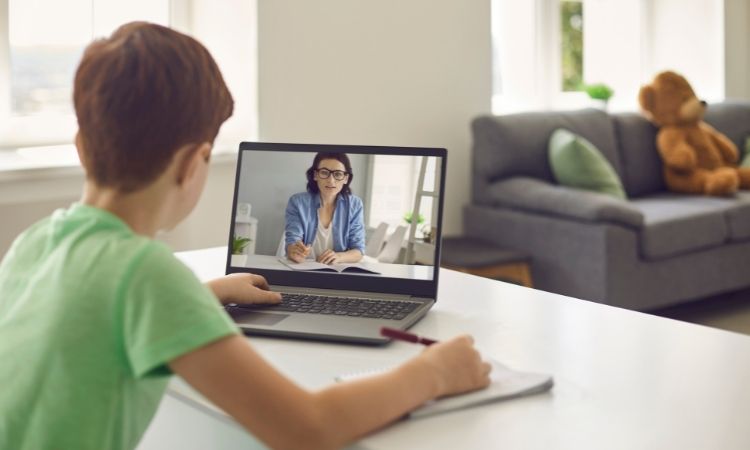The coronavirus pandemic has been continuously disrupting schooling since 2020. However, many students are returning to school in the fall of 2021. Some parents may be wondering about the effect of hybrid or distance learning on their kids.
Many children around the world have been spending school time from their homes. It is not surprising to discover that some of them are experiencing significant challenges. Current research provides insights into the impact of online learning from the comforts of students’ homes.
Consequences of Distance Learning
Many students experience issues during distance learning. These challenges may include family illness or death, financial insecurity, job loss, missing out on social connections and activities, loss of normalcy, and chronic stress and uncertainty. Together with parents, schools, and teachers, they had to figure out how to learn during quarantine. Therefore, minor triumphs must be a reason to celebrate during the coronavirus pandemic.
However, a uk essay writing service believes that remote learning is problematic to children and their families. Some parents resigned from their work to supervise their kids’ distance learning. Some of them had to work and left the children at home to learn on their own. On the other hand, students may ask their parents, “Can you write my assignment?” because they struggle with online learning demands and expectations.
Obstacles Faced by Children in Remote Learning
Students, parents, and teachers have discrepancies in online access and digital literacy. Some kids even have significant obstacles when signing on to class. Some may not have a computer or Wi-Fi. If they belong to a large family, they had to share one computer with their siblings or parents. Disadvantaged students may have intensified learning gap.
According to https://www.essaywritinglab.co.uk/assignment/, children with learning disabilities, bilingual learners, students with mental health issues, and those from traditionally underserved communities experienced unique challenges had less support and access during distance learning. Some parents could not help their students with school work. Older children had to work or help with household chores.
Although some students performed better with online learning, data shows that many children struggle with school. Some who did not flourish under remote learning experienced several mental health, academic, and physical effects. Some school kids may have short-term issues, but some may find it hard to reenter physical classrooms.
Effect of Distance Learning on Academics
Teachers, who offer college paper help, may have the best intentions, but some social, practical, and technical issues may hamper children’s learning. For instance, tech problems may result in disrupted teacher presentations. Schoolkids may find it hard to ask their teacher for help. They may spend long hours doing schoolwork because they need guidance from their instructors.
Engagement Issues with Remote Schooling
Some kids may opt to turn off their cameras, so other children may not see their faces. They do not know their classmates’ names or their appearance. They may also decide to turn the volume low and not talk during small group discussions.
Assessing Learning from Distance Learning
Teachers also have a hard time with remote learning because they are clueless if their students are learning. They need to help learners who fall behind.
Generally, children had fewer direct instructional hours, burdens with responsibilities for managing their learning, and lesser access to academic support. Some kids may excel under these conditions, but many do not. Those who had the most academic support did well, while others did not perform well.
Impact on Mental Health
Distance learning can affect mental health. Cases of kids having depression, eating disorders, and anxiety are increasing. On the other hand, children with preexisting mental health issues experience worse symptoms. Feelings of isolation are prevalent. Parents, doctors, and educators have called for a return to traditional schooling.
Reduced social interactions and loss of connection with classmates are challenging for many students. Students try gaming and social media to find hope, community, and social interaction. However, some of them feel alone. Children who experience discrimination, bullying, or social anxiety find relief with online learning.
Final Thoughts
Increased vaccination rates and quarantine measures help in getting everyone out of the coronavirus pandemic. As school districts begin opening their doors to traditional schooling, educators must ensure a safe return to school. Some kids may have fallen through the cracks and must catch up. Support for socioeconomic, socioemotional, and academic concerns is essential.















